Sierra Streams Institute (SSI) opens the doors to anyone and everyone. We strive to create a space where anybody can participate in our community science programs, to allow locals to actively do science within their watershed, and exchange knowledge and ideas with staff and other volunteers. Volunteers are core to […]
Read More >Water
In 2001, Julie Herrlinger moved into her 60-acre forest refuge along Deer Creek. Nearly as soon as she finished unpacking, the first call she made was to her local watershed organization, Friends of Deer Creek, looking for opportunities to volunteer. With easy access to the creek Julie wanted to know […]
Read More >From the headwaters to its confluence with the Yuba River, volunteers at Sierra Streams Institute (SSI) monitor 11 sites in the Deer Creek watershed every three months. In this blog series, we hope to introduce you to some of our long-standing monitoring sites throughout the Deer Creek watershed, some of […]
Read More >“Death was everywhere, with life being the usual exception.” -Ulf Danielson, The World Itself. That is my favorite quote from any book and I feel it matters to point out because that is how I feel when I’m here. Life is so unusual and strange but so rare at the […]
Read More >The year is 1976 and a graduate student is crouching by Mono Lake, a saline lake in the eastern Sierra Nevada mountain range. He is curious about this salt lake ecosystem that has water three times saltier than the ocean. What specialized animals can dwell in these extreme waters? How […]
Read More >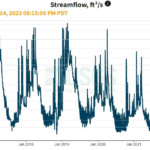
As we move into spring with snow still on the ground, we wanted to revisit this topic and give a brief update on where we stand now. The atmospheric rivers have continued to provide us with rain and snow, filling creeks and reservoirs and contributing to a snowpack for the […]
Read More >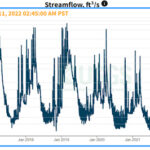
This winter has certainly been one for the memory books, but what about the record books? With all of the rain we’ve received over the last few weeks, multiple questions have been coming up. Just how big is this storm compared to prior wet years? Is this a “drought buster”? What […]
Read More >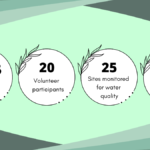
Summer sampling by the numbers: Summer Water Quality Summary: Between June and August, we collected water quality data from 12 sites in the Deer Creek watershed and 10 sites in the Bear River watershed. Learn more about our water quality parameters below! Oxygen is necessary for all forms of life. […]
Read More >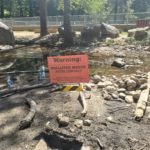
The signs are related to bacteria levels. Every summer in the creeks, as the temperature increases and water flow decreases, we see an increase in bacteria at many of our monitoring sites. Some amount of bacteria is always present in creek water, but less water in the creek concentrates any […]
Read More >Sierra Streams Institute is excited to undertake a new restoration project to supplement, improve and maintain salmonid habitat along a portion of Dry Creek within Beale Air Force Base located near Spenceville Wildlife Area. This is an exciting new project for SSI because all programs have an opportunity to work […]
Read More >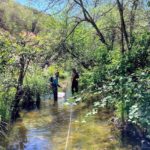
Over the last twenty years, Sierra Streams Institute’s water quality monitoring program has used citizen science to assess the health of the Deer Creek Watershed and engage community members in their local ecosystems. Historically, dedicated volunteers conducted monthly monitoring along eighteen sites spread strategically throughout the watershed. Volunteers measure pH, […]
Read More >When: January 8, from 10AM- 12PM, rain delay date January 9 Where: Pioneer Park Picnic Area (See map below) Questions or for more information contact Emma Walker, River Scientist, emma@sierrastreamsinstitute.org We are looking for more volunteer monitors specifically for the Bear River. Learn more about our Bear River Monitoring Here. […]
Read More >Background and History: The Bear River, flowing from its headwaters to the confluence with the Feather River, spans 73 miles. Its waters are heavily managed through dams and diversions. Though it is one of the more degraded watersheds in the area, the Bear River is one of the least monitored. […]
Read More >
Public health and safety have been at the forefront of many peoples’ minds this year as we are all dealing with a worldwide pandemic. There are a myriad of components that contribute to one’s health. One major factor is water. Water is one of the most critical elements to all […]
Read More >
